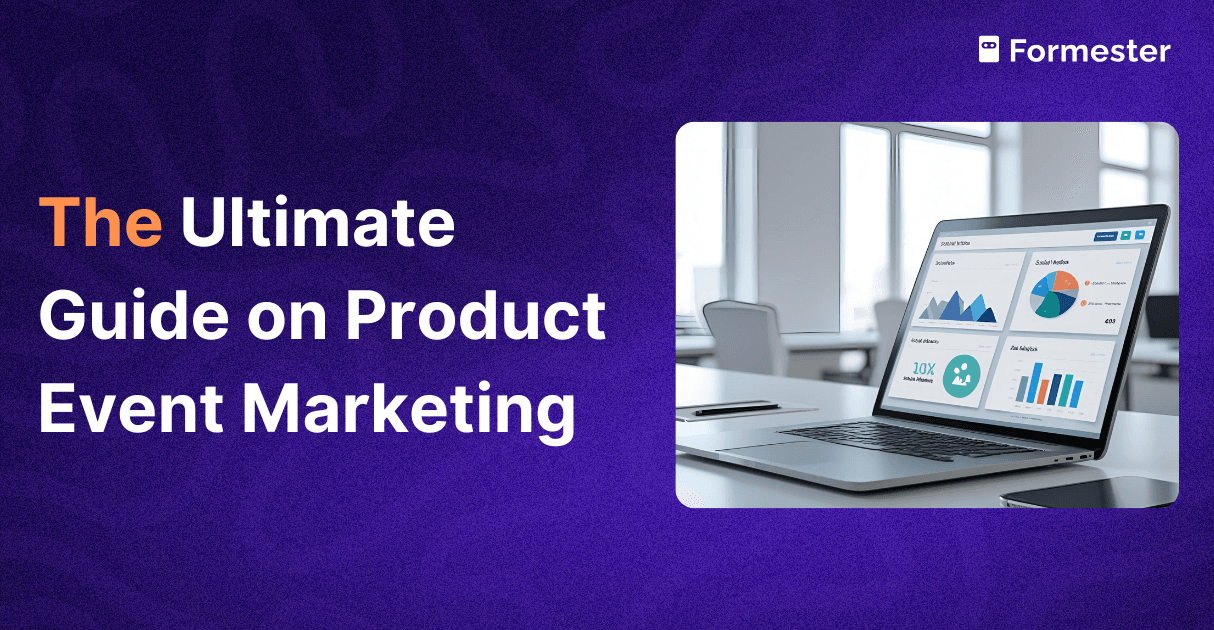Product Events Marketing Automation: The Complete Guide

Product events are more than just launches, demos, or webinars. They are opportunities to connect with your audience, showcase your product, and drive engagement. But managing these events manually can be overwhelming, time-consuming, and prone to errors. This is where product events marketing automation comes in.
With automation, you can streamline planning, promotion, event registration, reminders, and follow-ups, saving time and increasing results. In this guide, we’ll explain what it is, why it matters, and how to implement it effectively.
What is Product Events Marketing Automation?
Product events marketing automation uses technology to manage every stage of your event with minimal manual effort. From registration to post-event follow-ups, automation ensures consistency, personalization, and measurable results.
Key components include:
Automated Registration: Collect attendee information automatically.
Email Campaigns: Send personalized invites, reminders, and thank-you emails.
Audience Segmentation: Target attendees based on interests, past interactions, or purchase behavior.
Analytics & Reporting: Measure attendance, engagement, and conversions to improve future events.
Automation removes repetitive tasks, reduces human error, and allows your team to focus on creating memorable experiences rather than managing logistics.
Why Product Events Marketing Automation Matters
Boost Engagement
Automated reminders, confirmations, and personalized invitations make attendees more likely to join and participate.
Save Time
Manual tracking of registrations, emails, and follow-ups takes hours. Automation handles it in minutes.
Increase Conversions
Targeted campaigns before and after the event turn attendees into customers, maximizing ROI.
Gain Actionable Insights
With automation, you can track attendee behavior, engagement levels, and conversions, helping refine your marketing strategy.
How to Automate Product Event Marketing
Step 1: Choose the Right Tool
Select an automation platform that supports event registration, email campaigns, reminders, and analytics. Popular options include marketing automation software with CRM integration.
Step 2: Segment Your Audience
Divide your audience based on their preferences, purchase history, or engagement level. This allows you to send highly relevant invites and updates.
Step 3: Set Up Automated Campaigns
Invites: Schedule personalized invitations to reach the right people at the right time.
Reminders: Send reminders 24 hours and 1 hour before the event to reduce no-shows.
Follow-ups: After the event, send thank-you messages, product offers, or surveys to capture feedback and drive conversions.
Step 4: Customize Workflows
Use automation to create workflows for registration confirmations, waitlists, cancellations, and upsells. This ensures every attendee has a smooth experience without manual intervention.
Step 5: Track Results
Monitor metrics like registration rates, attendance, email opens, click-throughs, and conversions. Use this data to improve your next event.
Best Practices for Product Events Marketing Automation
Personalize Everything
Use attendee names and relevant product recommendations to make your emails and messages feel personal.
Test Your Workflows
Run tests before your event to ensure emails, reminders, and registration pages work flawlessly.
Integrate With Other Tools
Connect your event automation with CRM, email marketing, and analytics platforms to get a complete view of attendee behavior.
Segment Follow-ups
Send tailored follow-up content based on attendee engagement. Active participants might get an upsell offer, while those who didn’t attend could receive a replay link.
Measure ROI
Always track conversions, engagement, and customer acquisition to justify the investment in automation.
Common Product Events Marketing Automation Tools
CRM Platforms: HubSpot, Salesforce
Email Marketing Automation: Mailchimp, ActiveCampaign
Event Platforms: Eventbrite, Hopin
Form Builders: Tools like Formester can help you create registration forms, embed them in your site, and connect with your email campaigns seamlessly.
Automation tools make it easy to manage everything from a single platform, reducing friction and errors.
Conclusion
Product events are powerful ways to showcase your product, engage your audience, and drive sales. But manual management can limit your effectiveness. Marketing automation ensures your events run smoothly, attendees stay engaged, and every opportunity is tracked for measurable results.
By setting up automated workflows for registration, reminders, follow-ups, and analytics, your team can focus on delivering memorable events while the automation handles the repetitive work.
With the right tools and strategy, product events marketing automation can turn every event into a growth engine for your business.

